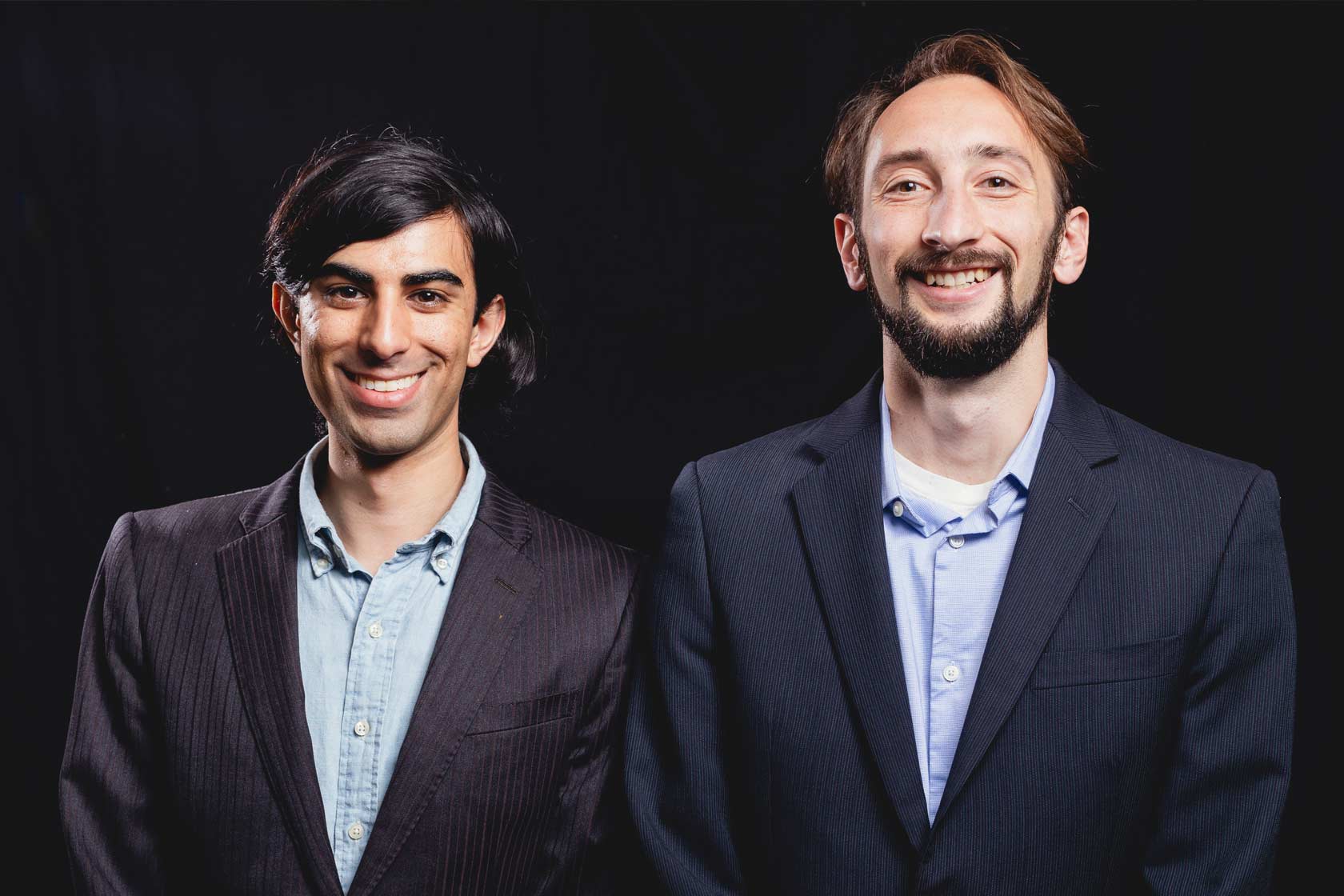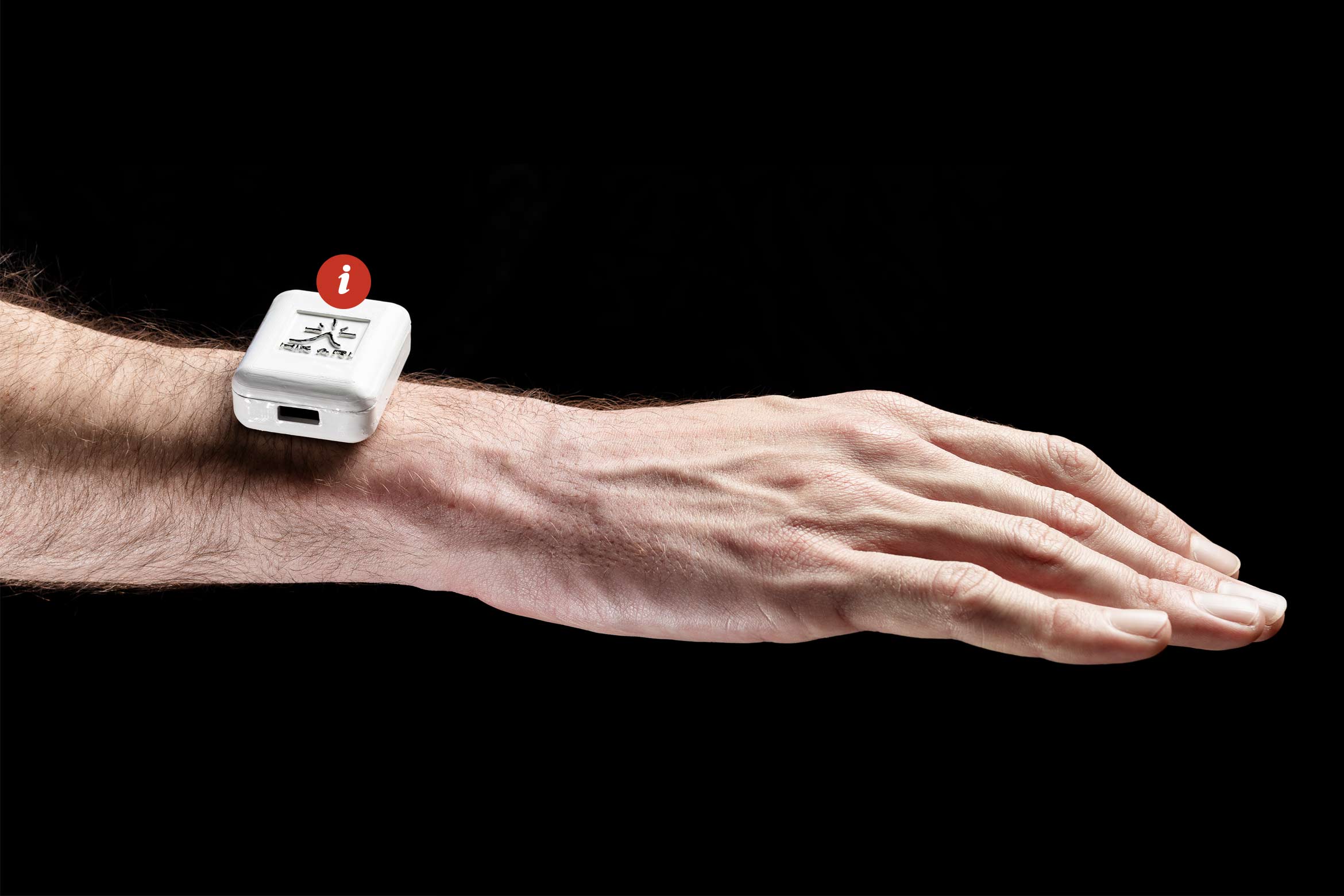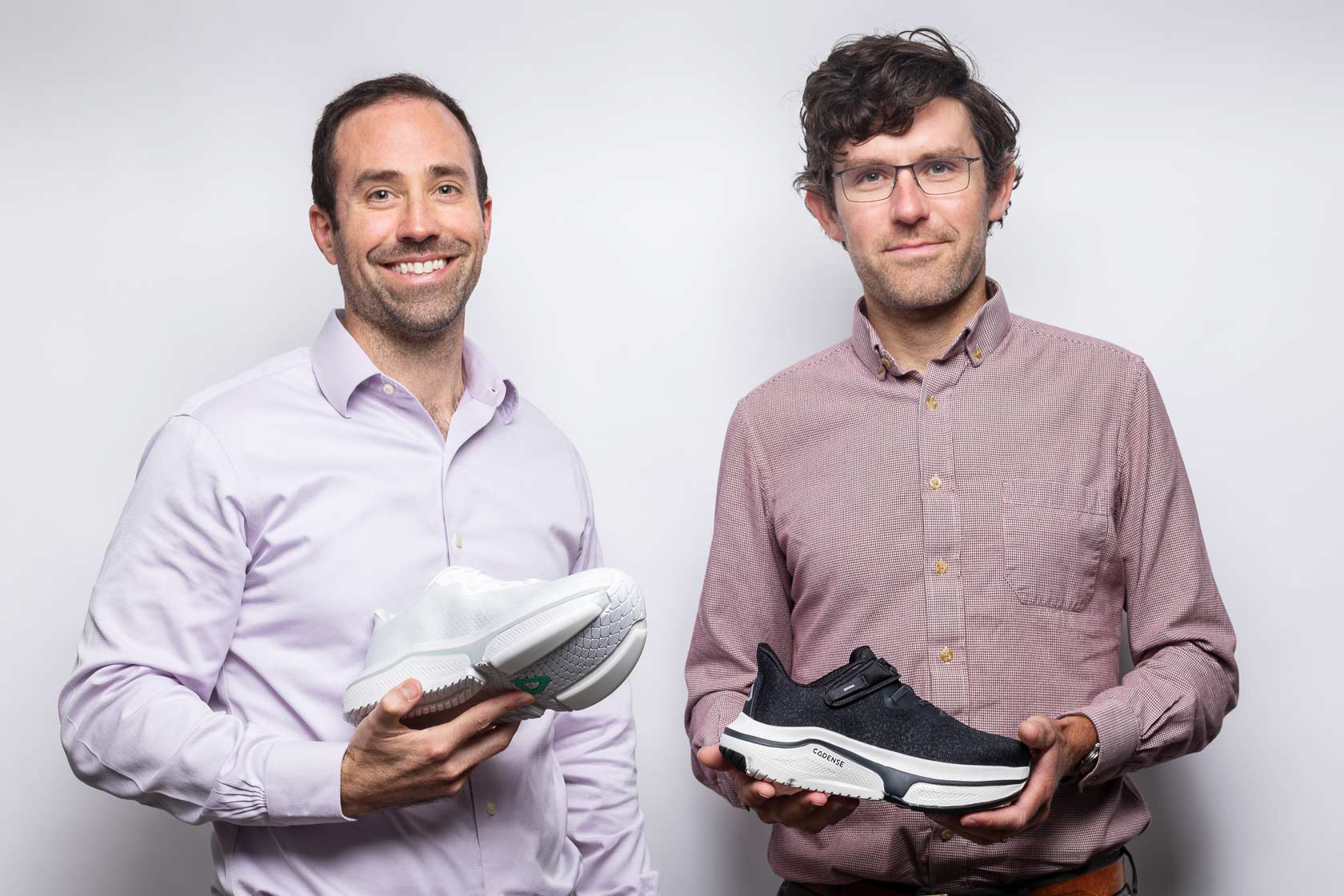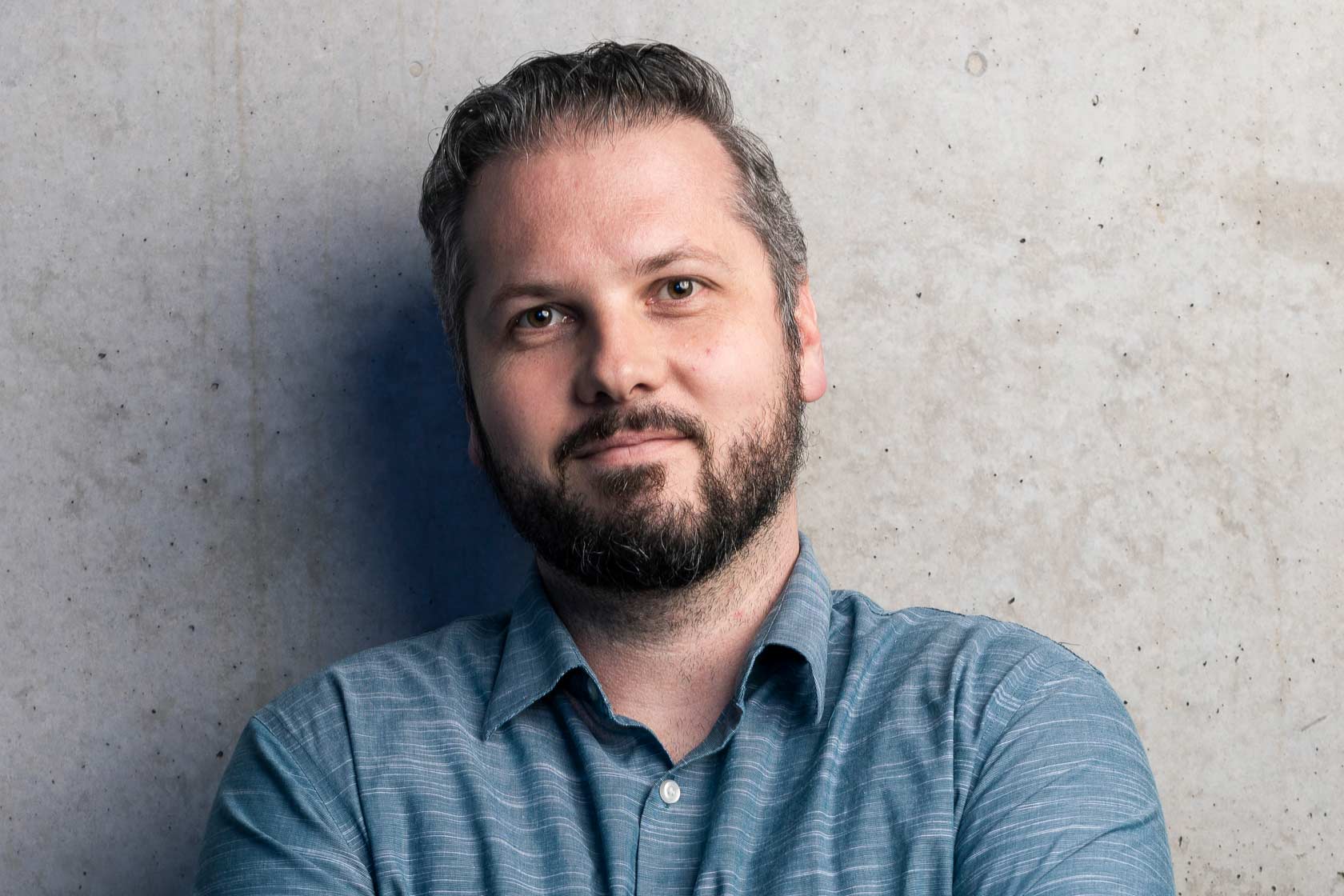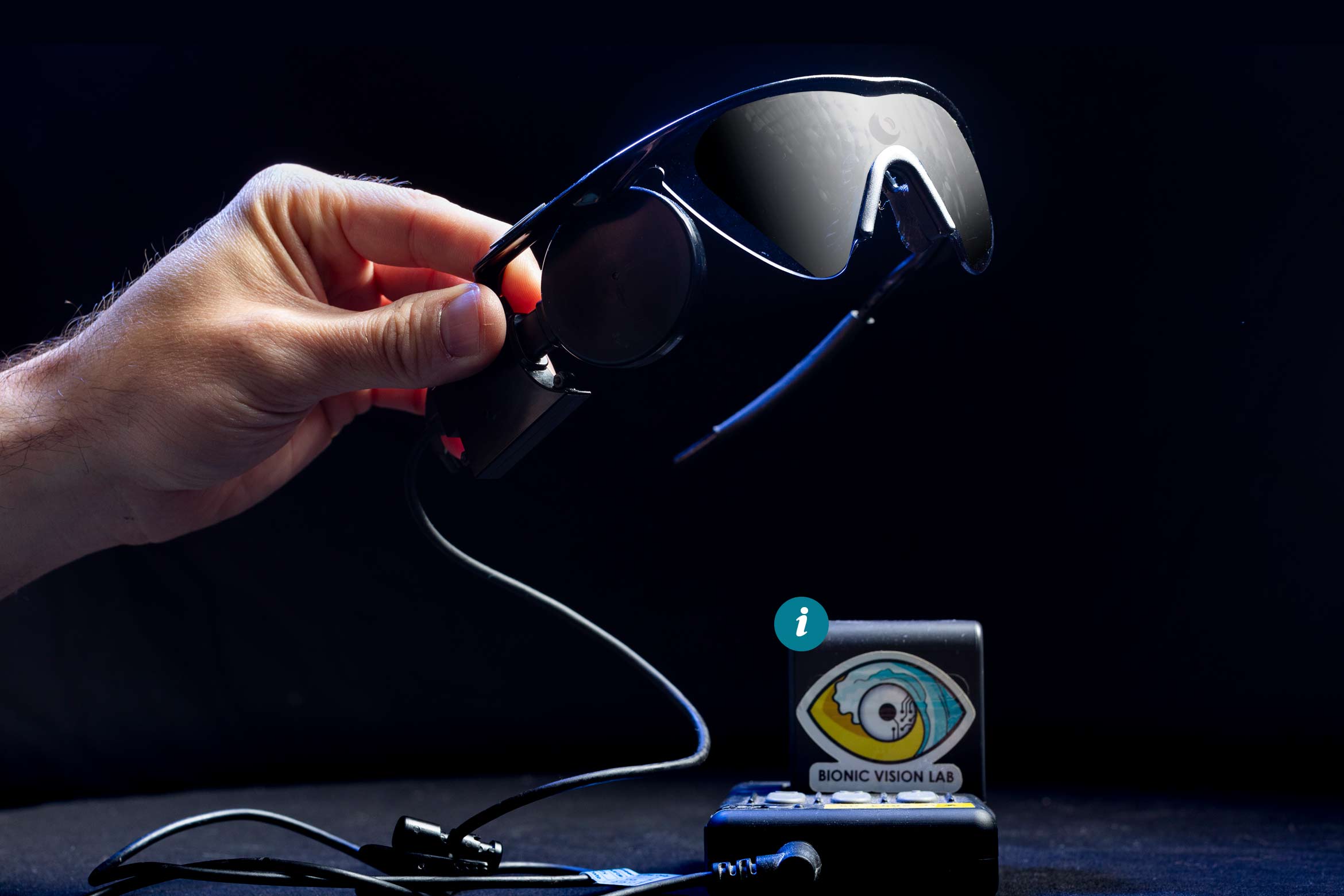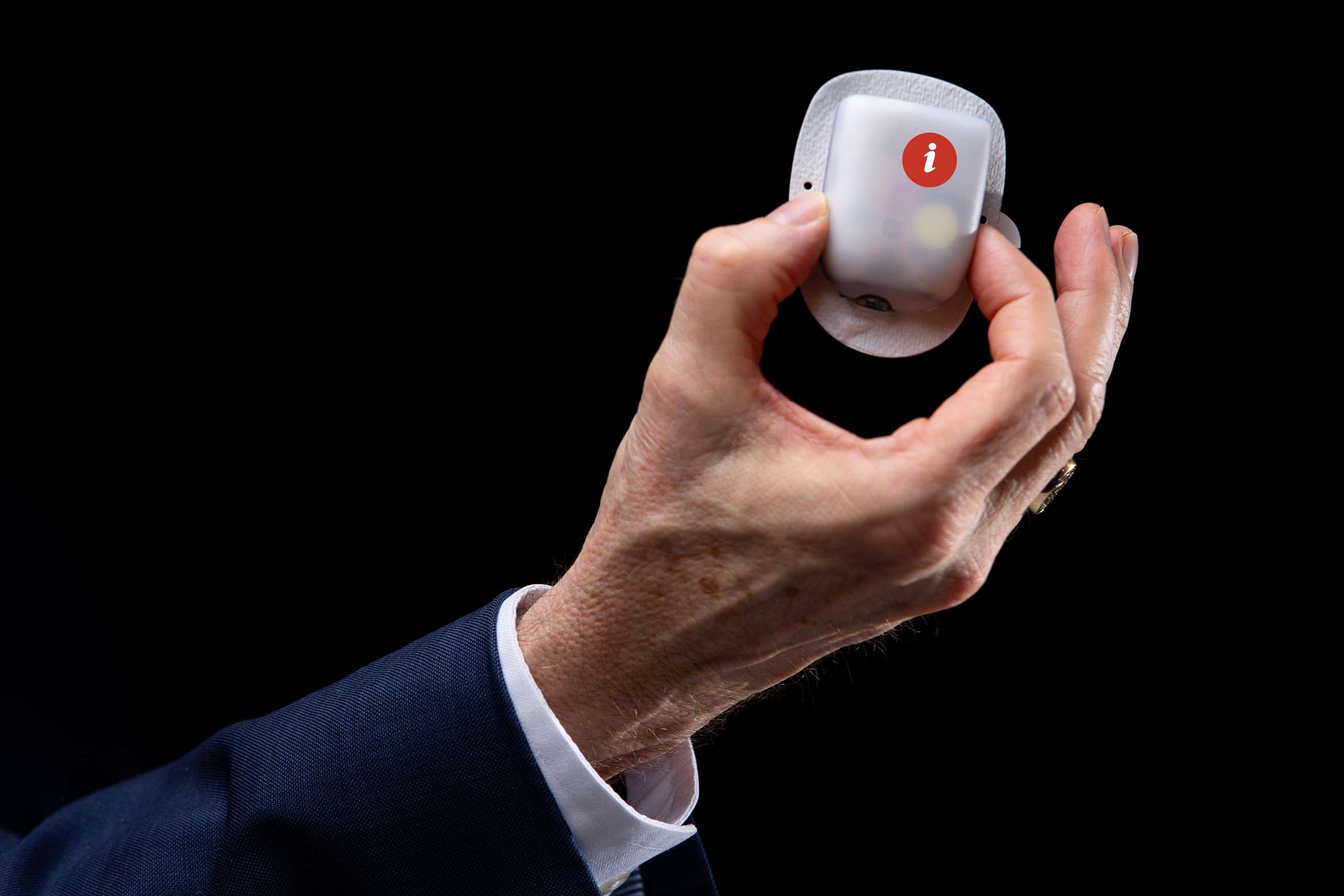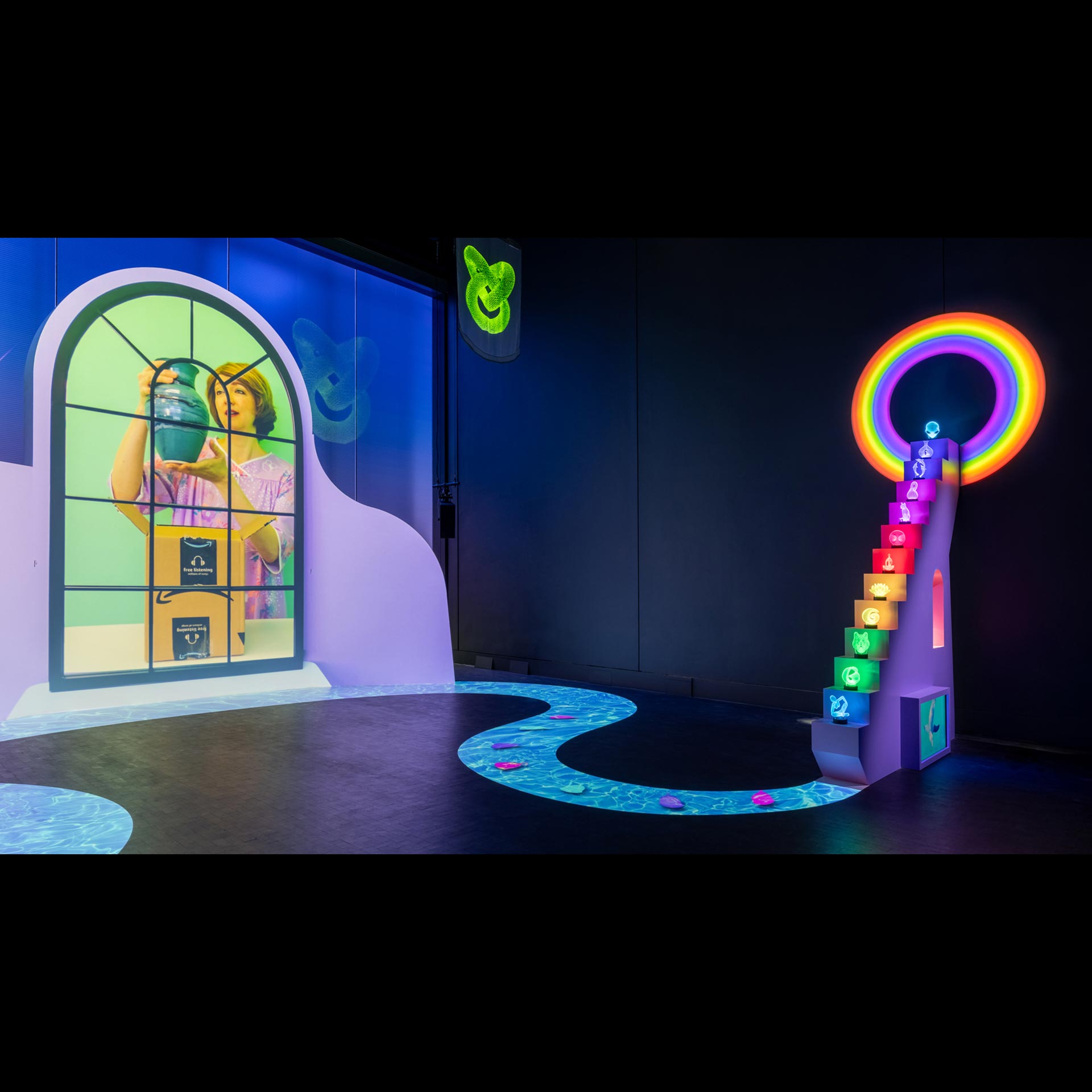Engineering in Real Life
Words by Sonia Fernandez, Shelly Leachman, James Badham and Andrew Masuda
Photos by Matt Perko and Nick Dentamaro
What nobler endeavor is there than to help others? UCSB researchers past and present continue in that tradition, leveraging their skills, creativity and collaboration into inventions that can help millions of people living with medical and physiological conditions live fuller, more independent lives.
These researchers — those featured here are only a small selection — combine an ambition to address longstanding and widespread health and wellness challenges, like blindness or mobility issues, with a focus on practical, technological solutions. Consider psychology and brain sciences assistant professor Michael Beyeler’s smart bionic eye that incorporates AI to give those with incurable blindness some vision. Or mechanical engineering associate professors Tyler Susko and Elliot Hawkes’s “variable friction shoe,” built to help people with foot drop walk more securely.
Other inventions can prevent medical errors that in addition to needlessly harming patients can cost billions of dollars per year. Former chemical engineering professor and associate dean of research Frank Doyle’s algorithm for an artificial pancreas enables the device to sense blood sugar levels in real time and deliver the appropriate dosage of insulin. Meanwhile, biomolecular science and engineering doctoral researchers William Fisher and Aria Ghasemizadeh are developing a device that uses light for precision drug delivery.
The benefits are many in this line of work. Not only do these researchers deploy their expertise and follow their curiosity and creativity to advance their fields, they also solve real problems. It’s a combination that underlies the career of electrical and computer engineering alum Rory Cooper, who was recently recognized for his work in wheelchair technology by the National Inventors Hall of Fame. At the end of the day and for all the hard work, the true reward is improving the lives of others.
